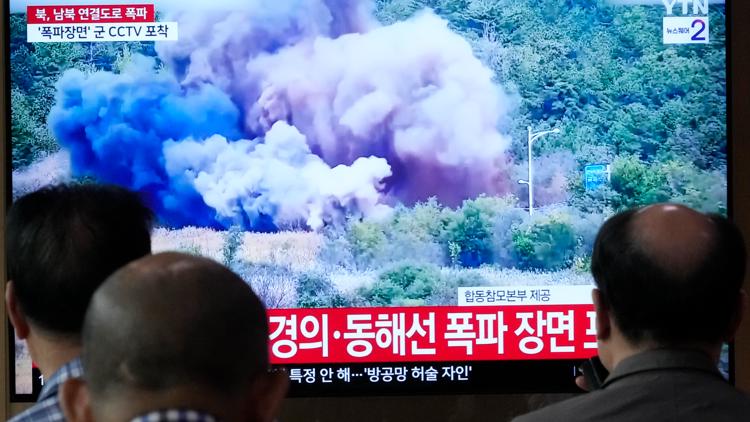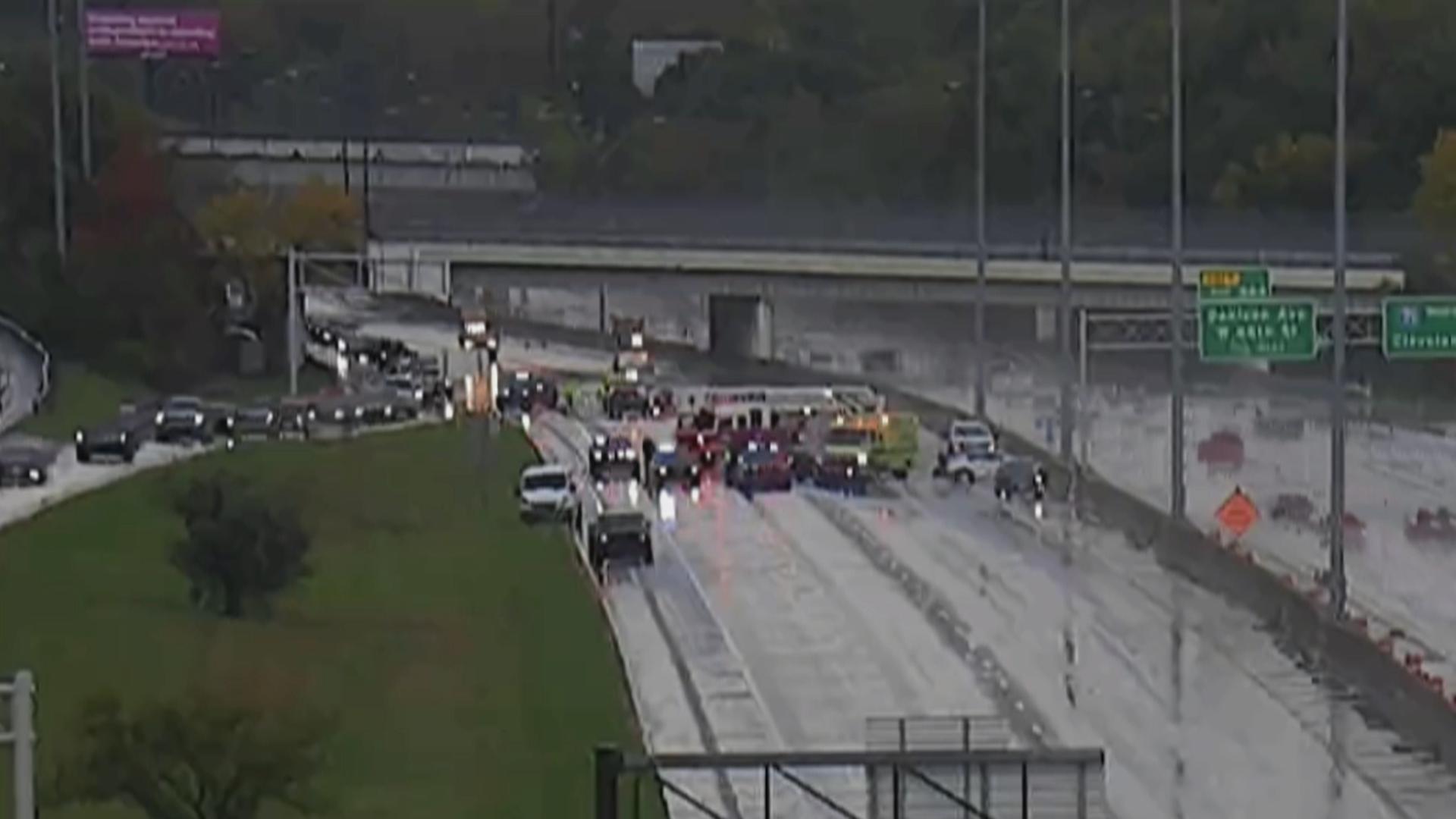SEOUL, South Korea — In a symbolic display of anger, North Korea on Tuesday blew up the northern section of unused roads that once linked it with the South, with the rivals exchanging threats days after the North claimed that its rival flew drones over its capital Pyongyang.
The roads’ choreographed demolition underlines North Korea’s growing anger against South Korea’s conservative government. North Korean leader Kim Jong Un has vowed to sever relations with South Korea and abandon the goal of achieving peaceful Korean unification.
Observers say it’s unlikely Kim will launch a preemptive, large-scale attack on South Korea because of fear that an almost certain massive retaliation by the more superior forces of the United States and South Korea would threaten Pyongyang's survival.
In response to the explosions, South Korea’s Joint Chiefs of Staff said its military fired within southern sections of the border as it bolstered its readiness and surveillance posture. The statement did not give details, but the move could have been an attempt to avert cross-border fire by North Korea. It wasn't immediately known whether North Korea responded.
South Korea’s Unification Ministry, which handles affairs with North Korea, separately condemned the North’s detonations as a “highly abnormal” and “regressive” measure that violates previous inter-Korean agreements.
Video provided by South Korea’s military showed a cloud of white and gray smoke emerging from the explosion at a road near the western border town of Kaesong. North Korean trucks and excavators could be seen clearing out debris. Another video showed smoke emerging from a coastal road near the eastern border.
North Korea has a history of staging the choreographed destruction of facilities on its own soil as a political message.
In 2020, North Korea blew up an empty, South Korean-built liaison office building just north of the border in retaliation for South Korean civilian leafleting campaigns. In 2018, North Korea demolished tunnels at its nuclear testing site at the start of nuclear diplomacy with the United States. In 2008, North Korea blew up a cooling tower at its main nuclear complex when earlier disarmament-for-aid negotiations with Washington and others were happening.
Destroying the roads, which were mainly built with South Korean money, would be in line with leader Kim Jong Un’s order in January to abandon the goal of peaceful Korean unification and formally designate South Korea as the country’s “invariable principal enemy." That order surprised many outside North Korea watchers because it seemed to break from his predecessors’ long-cherished dreams of peacefully unifying the Korean Peninsula on the North’s terms.
Experts say Kim likely aims to diminish South Korea’s voice in the regional nuclear standoff and seek direct dealings with the United States. Kim may also hope to diminish South Korean cultural influence and bolster his family's dynastic rule at home.
North Korea has accused South Korea of infiltrating drones to drop propaganda leaflets over Pyongyang three times this month and threatened to respond with force if it happened again. South Korea has refused to confirm whether it sent drones but warned that North Korea would face the end of its regime if the safety of South Korean citizens is threatened.
Kim Yo Jong, the powerful sister of Kim Jong Un, said Tuesday that North Korea has secured unspecified clear evidence that South Korean “military gangsters” are behind the alleged drone flights. She warned that South Korea “will have to pay a dear price.”
North Korea's state media reported Tuesday that Kim Jong Un laid out unspecified tasks related to “immediate military action” and the operation of his war deterrent during a meeting Monday. North Korea's military earlier threatened to turn South Korea into “piles of ashes," saying its frontline army units were ready to open fire.
During a previous era of inter-Korean detente in the 2000s, the two Koreas reconnected two road routes and two rail tracks across their heavily fortified border. But their operations were suspended as the Koreas wrangled over North Korea’s nuclear program and other issues.
The South Korean Unification Ministry said the roads and the rail links were built with South Korean materials and equipment worth $132.9 million provided in the form of loans, and the North is still obligated to pay back the aid.
Last week, North Korea said it would permanently block its border with South Korea and build front-line defense structures. South Korean officials said North Korea had been adding anti-tank barriers and laying mines along the border since earlier this year. They said North Korea has also planted mines and removed lamps along its sections of the inter-Korean roads and taken out ties on the northern side of the railways.
In recent years North Korea has performed a run of provocative missile tests, and South Korea and the United States have expanded military drills and cooperation.



